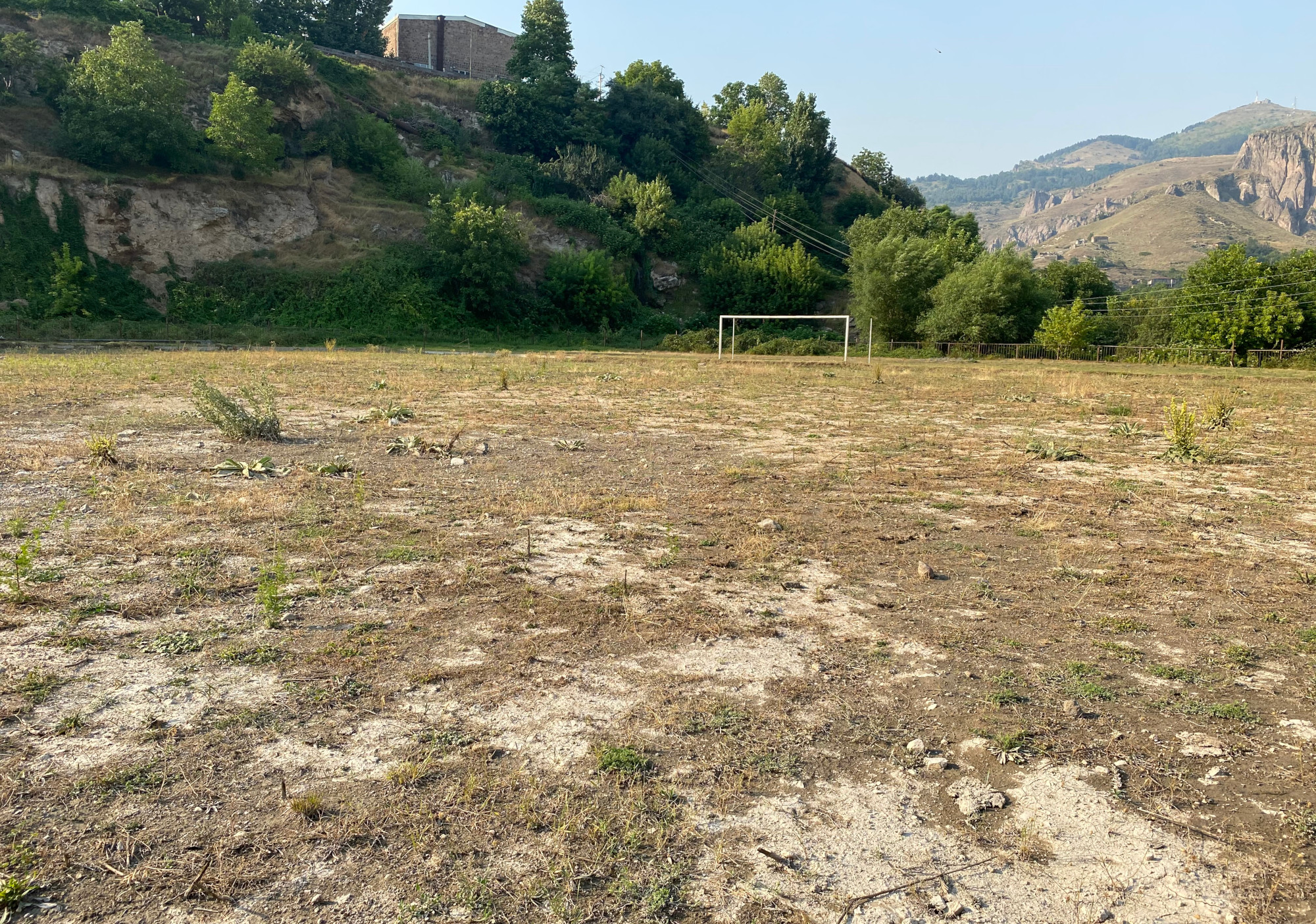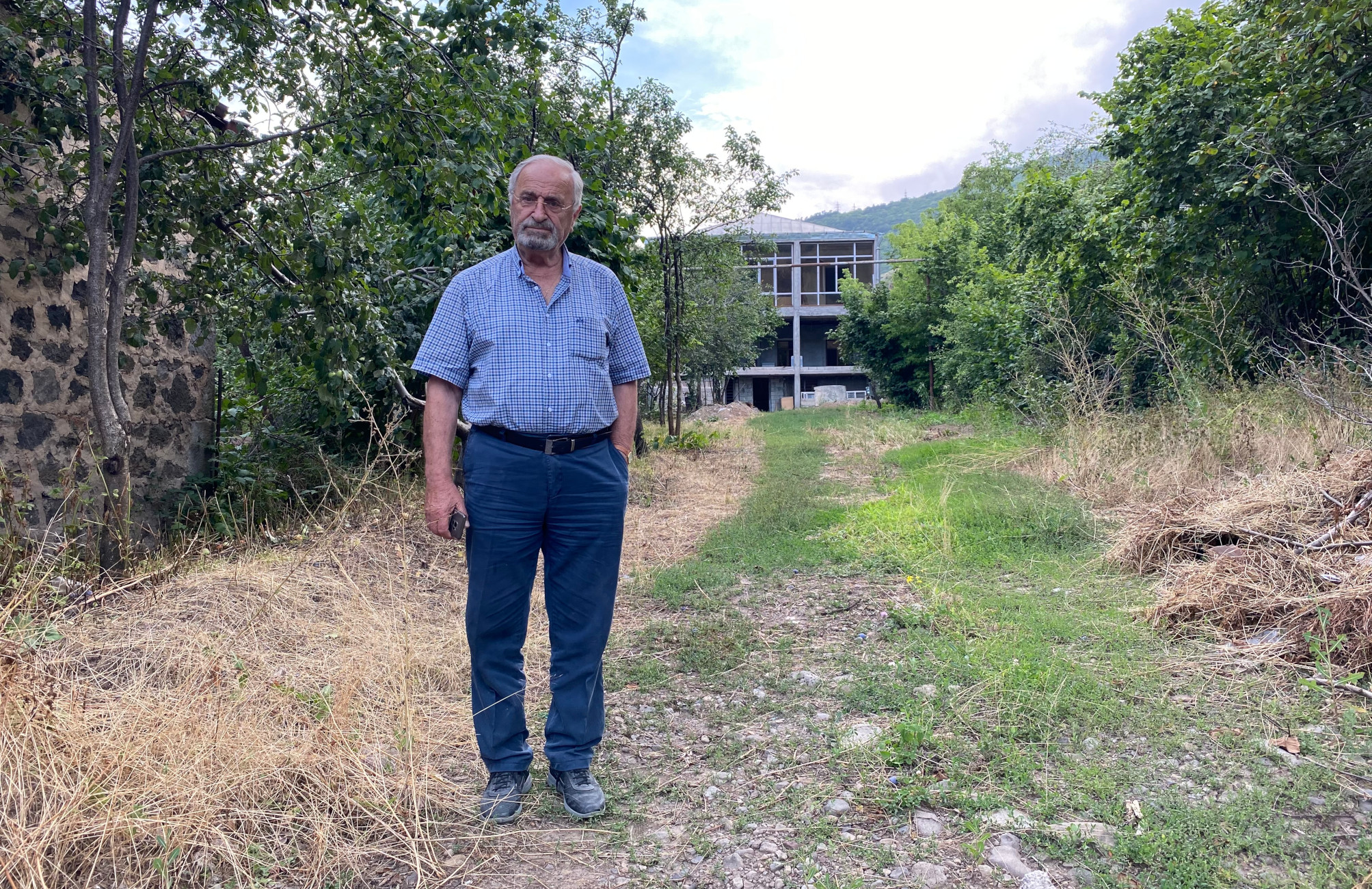News
From one conflict zone to another: Vahe’s move from Lebanon to Armenia
Vahe Kalindjian is sitting in an unfinished room that will become a souvenir shop and reviewing the floor plan of the hotel that he designed himself. In the left part of the room there are several bags of threads that should be transformed into carpets by local women after the construction of the hotel. “This is a small part of the threads that we will use; we have bought 150 sheeps of 7 colours, so that in the future we can use natural wool to make our carpets,” says Vahe.
“It was a dream for us to see the homeland and live here,” says Vahe, who moved to Armenia in 2019 from Bikfaya, Lebanon, where he was born in 1939 and raised. After travelling all over Armenia, Vahe Kalindjian decided to settle in Goris, a small town in Syunik province at the south of Armenia. Vahe says that the air and the people of Goris remind him of his hometown. “I really wanted to make carpets here,” he says, showing the pictures of those designed by himself. “There were big factories for weaving carpets in Goris but now they are closed. And I want to bring that culture back to this city.”
What connects Armenians with Lebanon?
Today, about 100,000 to 120,000 Armenians live in Lebanon. This number was almost twice as high in the mid-1970s. The number of the Armenian community in Lebanon has decreased due to the civil war in the country, which has lasted for 15 years. Insecurity, economic crises and uncertainty have forced Armenians living in Lebanon for many years to move.
Armenians appeared in the Middle Eastern country mainly after the Hamidian massacres that took place in the mid-1890s in the Ottoman Empire, resulting in the death of nearly to 300,000 people, as well as after the Genocide of 1915, during which 1.5 million Armenians were killed. Lebanon is currently considered one of the largest centers of the Armenian Diaspora. Having lived in Lebanon for many years, Armenians have established many cultural and educational centers, many magazines and newspapers are published there, trying to keep close ties with the homeland.
What is common between Goris and Bikfaya besides the air and the people?
War. The war may have ended, but the conflict is not over yet.
On 27 September 2020 a war started between Azerbaijan and Armenia over disputed Nagorno-Karabakh. The war lasted for 44 days with more than 8,000 killed, including civilians, more than 11,000 wounded, and more than 200 still missing on both sides.
After the collapse of the USSR, most of Nagorno-Karabakh —the area for which the war started— was Armenian-populated. During the Soviet era, most of the population were Armenians, but there were also Azeris. From 1923 to 1991, Nagorno-Karabakh was officially part of the Republic of Azerbaijan as an autonomous region. In 1991, Nagorno-Karabakh left Azerbaijan and the declaration of independence of Artsakh was adopted. However, Azerbaijan did not accept the declaration of independence, and a three-year war between Armenian and Azerbaijani forces ensued. Armenians claimed victory in 1994 and were able to establish their de facto Republic of Artsakh, which however did not receive recognition by any other state.
Because of the bloody war of 2020, thousands of Armenians were displaced, and lost their homes and relatives. The 44-day war ended with the mediation of Russia on 9 November 9 2020. As a result of the war, dozens of settlements of Nagorno-Karabakh came under the control of Azerbaijan.
The connection of Goris with war
Goris is a small town in the south of Armenia, 254 km from Yerevan, the capital of Armenia, and 93 km from Stepanakert, the capital of Nagorno-Karabakh.
When we arrived in Goris in August 2021, 9 months after the war, the town seemed calm, but something about that calmness was disturbing. Although the people of Goris were living their normal life, they still remember the sound of the war.
 Football pitch in Goris. / Photo: R. G.
Football pitch in Goris. / Photo: R. G.Walking through the town we noticed this old football field, which would fit any city so well if we were in the Soviet era. Something was very wrong about that football field from the very beginning. Looking at it we thought that something was missing. Shortly after we realised that what was missing were kids playing there. We were wondering why children play in the streets when they have this big soccer field. We tried to ask people living nearby: it turned out they do not have the best memories of that place. During the 44-day war the helicopter delivering victims and wounded was landing in this football field, and residents of Goris still remember these scenes.
Before the second Nagorno-Karabakh war in 2020 Goris was never considered a border area, but as a result of the recent war between Armenia and Azerbaijan some villages of Goris have now become border areas. The new Armenia-Azerbaijan border was found to cut through Shurnukh, a small village of Goris. 11 houses of the Shurnukh village fell under the control of Azerbaijan, and the 12th house is where the new Armenian-Azerbaijani border now passes through. The backyard is in the territory of Azerbaijan while the house itself is in the territory of Armenia.
The war interrupted the construction of Vahe’s hotel
Vahe Kalindjian was planning to open his hotel in 2020, but the war changed his plans. “We were seeing UAVs and everything, people were scared but yet did not think of leaving the town.”
More than a year after the ceasefire, tensions have not decreased. Goris is very close to the border, in different parts of which the situation periodically escalates․
During the war in Lebanon Vahe Kalindjian was working in Beirut. “Leaving the house for work I did not know whether I would come back or not.”
The Lebanese Civil War started in 1975. It resulted in an estimated 120,000 fatalities. Between 1976 and 2005 Lebanon was also subjected to overlapping foreign military occupations by Syria and Israel. Ever since Lebanon seems to have seen no peace.
Now Vahe is alone in Goris, because his wife and three daughters live in Lebanon.
“I live here for a month, then travel to Bikfaya for another month, and then come back to Goris again. There is no petrol, no electricity, no gas, no water in Lebanon. We have electricity only for 1 or 2 hours a day; here in Goris it is better,” says Vahe.
Vahe Kalindjian first visited Armenia in 1973. In 1974 he did so again along with his wife, and then left for 40 years. “I hardly escaped from the Soviet Union, I was anxious there living in constant fear under Russian control,” explains Vahe. In 2013 he visited Armenia for the first time after the dissolution of the Soviet Union. He participated in a construction project to build a new village in Nagorno-Karabakh that was later named New Cilicia, after the name of an Armenian-ruled medieval kingdom.
Vahe has participated in projecting and also helped with the donations. “I worked as a government official for 35 years in Lebanon. I was the only elected Armenian member of the municipality of Bikfaya,” notes Vahe, adding that last year he even initiated the visit of the mayor of Bikfaya to Goris.
“I like people here,” says Vahe looking on his phone, trying to find his pictures with the mayors of Goris and Bikfaya. “During the meeting with the mayor of Goris I offered him to teach local men construction skills they are lacking to help them to earn more money,” he says, adding that he is ready to invite professionals from Lebanon to teach local men.
 Vahe Kalindjian. / Photo: R. G.
Vahe Kalindjian. / Photo: R. G.Vahe hopes that next year his hotel will welcome its first guests and local women will be provided with jobs as soon as possible.
In addition to local women, the work will involve women displaced by the 2020 war. Some of them already work in the carpet-making center of Verishen village not far from Goris. Ruzanna Torozyan, Executive Director of the Women's Resource Development Center, says that women work here mainly to find inner peace. Women, she says, need employment that will help them recover and not constantly think about war and their losses. Many of the women mastered carpet weaving before moving to Goris, and some started learning it there.
After the opening of the guest house, some of those women can move to the guest house and continue doing carpet weaving there.
Our tour finished at the backyard of the hotel. “I planted peach and apple trees that I brought from Lebanon. The climate in Goris is very similar to Bikfaya, I hope in a few years we will enjoy Lebanese fruits grown in Goris.”
